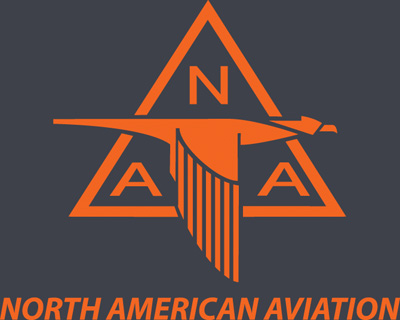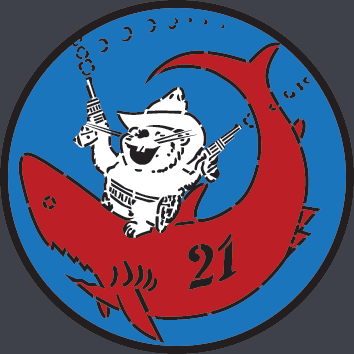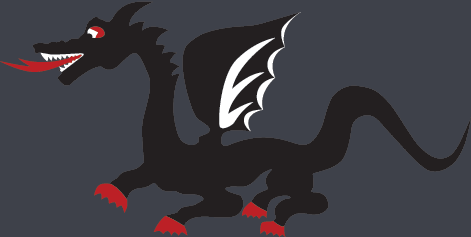



This decal sheet has been designed and produced on request from Wings and Tracks - please visit:
www.wingsandtracks.ch
P-51 Decals are only available
from Wings and Tracks or from Matterhorn Circle directly - contact info@mc-one.ch


After WW2 Switzerland stepped into the jet age in the summer of 1946 and tested the DH-100 Mk.1 Vampire. Subsequently, a large number of these fast jets (DH-100 Mk.6) were ordered to replace the ageing Messerschmitt Bf-109 and Morane D-3801 fighters. To fill the gap until the advanced version of the Vampire became available, a quick and economic solution was found in the North American Aviation P-51D Mustang.
The US Army Air Force Europe had large numbers of surplus P-47 & P-51 fighters stored at Nurnberg and Ober-pfaffenhofen and did not intend to return them to the US. Having flown and tested a captured P-51B during the war, the choice was swift and favourable conditions for a purchase of 100 aircraft plus 30 aircraft for spares could be negotiated for a price tag for US $ 4000.- (approx. CHF 17000.-) per aircraft.
USAAF pilots delivered the first 26 aircraft to Dübendorf in February 1948 and by the end of August of the same year, Switzerland had 100 P-51 (D-20 & D-25) in the inventory. The remaining 30 aircraft had to be brought up to flying condition by Swiss personnel and Instructor pilots ferried them to Switzerland since the USAAF was busy with the Berlin blockade.
The range of J-901 to J-1000 was assigned for the Mustangs while the numbers J-1001 – J-1200 were reserved for the Vampires on order. However, being Swiss, the 30 ‘spare part’ Mustangs were implemented into the fleet and the required spare parts were cannibalised from other aircraft at Oberpfaffenhofen during October 1948, thus the Swiss Air Force had their own airlift with the Ju-52 transport aircraft. This operation had the consequence that the assigned range for the registration numbers was insufficient and the aircraft had to be re-numbered in the Range J-2001 – J-2130.
Originally, squared national insignia that offered higher visibility were applied on both, bottom and top of the wings as on the rudder. Those days after the war, unpainted aircraft became popular and it was deemed, that for fast aircraft, the control surfaces should remain unpainted. The switch back to the round national insignia was implemented during 1949.
There is an on-going dispute about the color on top of the engine cowling. While the Americans favoured blue and olive drab amongst other bright colors, it is believed that Swiss Mustangs had RLM 24 (a very dark black / blue) applied - while other sources state simply black.
Different low visibility paint schemes were tested during 1952 on 12 airframes, consisting of dark green over light blue or unpainted lower surfaces. The specification (Art. No. xxxx) of these colors are not to a defined standard and the Vallejo Numbers given in the instructions are just close but not a definite match. At the same time, neutrality markings were tested again with the intention that the aircraft could be identified from a distance of 1000 meters.
Unique to the Swiss P-51 were the straight ‘Ziellinien’ applied on top of the wings from 1950 onwards. Some Aircraft originally had angled lines that aided the pilot to hit the target on low level bombing missions. These were duly replaced with the straight version.
‘Manöver Kennzeichnung’ was common to a number of airframes in the shape of red, blue and yellow bands behind the cockpit and on the nose. The bands had a width of 1000mm or 500mm. These markings were kept until the phase out in 1957.
The main reference for this decal sheet is the sole preserved P-51D (J-2113) at the Flieger und Flap Museum in Dübendorf. However, I would not have succeeded without the excellent book by Georg Hoch : Farbgebung und Kennzeichen der Schweizer Luftwaffe 1914 – 1959. See www.georg-hoch.ch
This decal sheet has been printed by Fantasy Printshop in the UK. They should be applied onto a glossy painted surface to avoid the silvering effect. Decal softeners like Micro Sol & Micro Set work well with these decals – please make tests when using different brands.Farbgebung und Kennzeichen der Schweizer Militaeraviatik 1914 - 1950
Georg Hoch
ISBN: 978-3-905404-53-1
available from:
www.georg-hoch.ch
www.wingsandtracks.ch
When building a model of a Swiss P-51D, one must be aware, that the aircraft were not selected based on the type but on condition – low hours, low fatigue, no damages etc. Therefore you will find not only P-51D but also F-6D, P-51K and F-6K. They were all considered as P-51D – amongst them 13 aircraft for reconnaissance duties and 3 aircraft converted as two seaters. This said, it becomes clear that not all aircraft had the same cockpit equipment (i.e. instrumentation or seats) and also the external differences like exhaust shrouds were obvious.
The original range J-901 – J-1000 proved insufficient since the intended ‘spare parts aircraft’ were put into operational service. Numbers were replaced with J-2001 – J-2130.
Initially the aircraft carried squared high visibility national insignia and no maintenance markings.
The engine cowling was painted with a very dark blue-black satin color (RLM24). On a few aircraft, the cowling was temporarily painted khaki (Muster 38) for testing purposes.
Not too long after entry into service – the round national insignia became fashionable and the P-51’s were repainted… maintenance markings got applied – initially only in French.
Original Cockpit placards (English) remained. Translations were made in few instances like the engine performance table. The call sign number was painted l/h on the canopy frame.
Another early modification was the replacement of the perforated panels on the nose with solid ones. At the same time, the last 3 digits of the aircraft registration were painted on the nose.
With time, squadron markings started to appear. The ‘Pegasus’ of Squadron 16 and the ‘Mungg’ of Squadron 21 are documented on the P-51.
In fall of 1949, some P-51 received a 400mm wide yellow band around the aft fuselage and the spinner was painted yellow as well. These markings should have been removed after the war exercises (Herbst-Manöver), but remained usually until the next major overhaul. J-2064 & J-2071 are documented examples.
The exercises in fall 1951 called for wider bands of color (1000mm) – J-2008, J-2075, J-2076 & J-2105 amongst others were adored with red bands and noses. These markings were not removed until the P-51 was withdrawn from service.
In 1952 a dozen P-51D’s were painted in a low visibility scheme of dark green (RLM 70) over light blue (RLM 65) – actually the same scheme that was carried by the Bf-109E – except that the area around the registration remained unpainted.
In case of war the national insignias would have been over sprayed with thinned base color.
J-2112 also received red high visibility stripes on top and bottom of the wings.